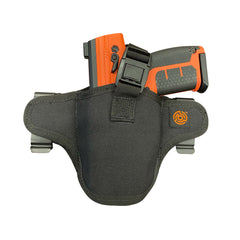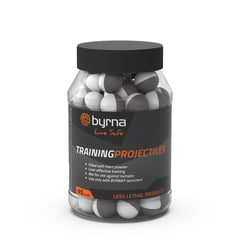
Nearly one in three break-ins happen right in broad daylight, and they can catch you off guard. Daytime thieves use simple tactics to slip in unnoticed. A homeowner once got tricked by a knock-and-talk scam while the sun was high in the sky. You can follow a few simple, clear steps that'll keep your family safe without adding any unnecessary stress or extra gear.
Proper room positioning can give you a bit more time when every second counts. You'll find clear paths, cover zones, and prime places for your phone. Are you ready to see which facts matter most right now?
Let's run through some easy tips that can make any room in your home defensible for you.
Table of Contents
The Factors On How to Pick Spots
We never want to use these skills. Keep family close enough to help, but leave space so you all don't become easy targets. When you map out your home's defense, consider how near each person is to you. If they're too far, you might not reach them in time - if they're too close, a single strike could hit everyone. Time your plan by moving from your position to theirs.
You need an escape plan if things go bad. Make sure every defensive position has an exit path - a way out can save your life. Plan at least two paths so you're not stuck. You can't help anyone if you're pinned down. One study from the State Home Safety Association found that homes with escape routes saw 60% fewer deaths in invasions.

You need reliable ways to share info with your family during an emergency. Test how sound moves through your rooms and hallways. Practice easy hand signs or set up code words when you can't make noise. Try it from different places in your home - can you still get the message across?
You want to hide behind surfaces that can stop an attack. A granite countertop can probably take a shot. Your bedroom door won't hold up at all. Interior walls only give you concealment - they won't slow a bullet. Think about what each piece of furniture is made of before you pick your place. Try tapping on walls and counters to see if they sound hollow or solid.
You get extra seconds when you watch high-traffic areas even though your heart will be racing. Scan your sight lines so you know who's coming and where they'll show up. A corner between your front door and hallway can give you a heads-up on movement. Try squatting low or standing on a chair to see if your view changes. You need strong hardware on your doors. A high-end deadbolt means nothing if the frame is weak. Exposed hinges let someone strip a door in seconds. Swap out hinges for protected ones or add hinge pins so the door stays in place. Test each door by asking someone to try to shake it from the outside.
When you wake up at 2 a.m. to strange noises, you reach for your kids and might leave your perfect defensive position because you have to get them to safety. It should also make sense for families. What you grab first should be clear before anything happens - have a fast plan in place.
Room Benefits And Tradeoffs
No one ever wants to feel trapped. Your bedroom feels a bit safer because you only have a couple of doors to keep an eye on - it just wakes me up at night. You can move faster from the bed to the closet or door without tripping over furniture. A master bathroom adds another obstacle between you and anyone coming in, and you might even lock a second door. The kitchen can give you some helpful tools. But it also has more entry points - back door and side entrances. Try to weigh the pros and cons of each place.

Living rooms can be tough to lock down because they usually have windows and doors on every wall. Curtains or blinds still leave glass you can't barricade on the fly. Basements keep you out of sight and give you some alone time. But make sure your phone still works down there before you head there every time. You don't want to lose contact when it matters most. I heard a story about a homeowner who chose his laundry room as his favorite place. He stocked it with gear and bolted the door shut. Then, a storm knocked out the power, and he lost cell service completely. His hideout turned into a total signal dead zone. He learned the hard way that coverage matters.
Say you consider how your family moves through the house at different times. Are the kids, parents, and pets going to find your room without running into problems? Can they all get there fast if something happens? No matter how safe a room is, it won't help if no one can reach it when they need it, so safety takes some planning.
Pick the rooms that only have one way in. Those places make it a lot easier to hold your ground and limit who can strategize against you. Bathrooms or walk-in closets usually check that box and could even have an escape path through a window or hidden door. Double-check that it's clear of clutter. Heavy furniture can protect you. But it can also leave you stuck. Could that big bookshelf that deflects everything also trap you if you need to make a quick Or could you move that table in time? Try to find a balance between cover and freedom to move - and think about if you can push or pull your barriers under pressure.
Open-concept layouts look inviting for friends and family. Wide sightlines make your space feel welcoming. But when you're defending, those clear views give away every move you make and leave you exposed. Why tip your hand? Look for the places that break up the space and let you control what others see first.
Cover And Concealment Strategies
Don't let that sense of security fool you. You don't get any real bullet protection from common home materials - drywall, hollow doors, and furniture will only hide you - they don't stop bullets or rounds. A bookcase full of hardcovers looks sturdy at a glance. But bullets can cut right through it. You need heavy material for real cover - brick walls, concrete, and even appliances like refrigerators can block projectiles.
That difference shapes how you set up your defensive positions inside your home. Homeowners are surprised to learn furniture offers no real protection - you won't find true ballistic cover in a normal living room. A sofa that blocks sight lines won't stop bullets.

You need about three feet of space from your cover - roughly one meter - that gap can give you some room to move faster without entering danger. If you huddle too close, you lose mobility when you need it most.
You can improve protection with diagonal angles instead of lining up directly with doorways or long, narrow hallways. Attackers funnel through those corridors. When you change your position off-axis, it helps you stay away from obvious lines of fire. When stress hits, or it's dark, you might not find good cover in a split second - people overestimate their safety or forget basic plans under pressure. You can create safer positions by rearranging furniture ahead of time. Test sightlines and cover points during your drills at different times of day and in different lighting conditions. Small, easy adjustments matter to your defensive setup.
Safe Storage Of Defensive Tools
You need to balance quick access and safe storage. That sounds tough. You want to grab your gear fast in an emergency without putting anyone in danger. That's true for kids, too. Try using storage that locks securely but opens in seconds when you need it. Here are a few options to make setup easier.
Fast-access safes let you reach your tools in seconds and still lock up tight. They meet ASTM safety tests, too. Why settle for a big safe when you can use hidden furniture in your living room? I know people who turn side tables or cabinets into secret compartments. Pick the option that fits your style.
Biometric locks open in a flash - until the power cuts out. You don't want to fumble when every second counts. Have a backup way to open your safe. Pair a fingerprint scanner or keypad with a backup key or code.

A family's near miss shows why you can't skip secure storage. Their four-year-old found an unlocked firearm in the guest house. Thinking about it makes your heart stop. Thankfully, no one got hurt. You don't plan for accidents until they happen under your own roof. Make sure every weapon stays locked up day and night.
Less-lethal tools keep you out of legal trouble across state lines. Stun guns and pepper spray can be effective without the same restrictions as firearms. Store them in lockable cases just like any other gear. Keep them nearby so you can grab them at a moment's notice.
Wall-mounted lockboxes cut your response time by keeping your tools close. Mount them near entry points or in your closet so you can grab what you need in a few steps. Store locks and keys together for backup.
You'll still own your readiness and responsibility.
Redundant Zones And Escape Paths
You need to plan your escape routes just like you plan your defenses. Too many people just plan to stand their ground and never think about how to fall back.
Say you're trapped upstairs, and an intruder is blocking the stairs - you don't want to be there. Your day and night defense plans should look very different from each other. During the day, you can move around and spot threats more easily.
At night, you're working with low light and slower reactions. Draw an easy map of your home and mark each room's primary and backup exits in different colors to make things clear. That shows the weak spots you missed.

Don't just focus on the front and back doors of your home. Your garage door has a manual release you can pull if the power goes out. Hang an emergency ladder by a second-story window, and you've opened up another way out.
Those backups matter when every second counts in an emergency.
Practicing a one-minute evacuation along two separate routes helps you discover weak points. Few people have ever tried it before. Your adrenaline takes over everything, and your first run takes three times longer than you expect. Try timing yourself to see the results. Why wait when you can fix it?
Skip the single safe-room plan for your home - if intruders cut you off from that one spot, your whole setup collapses faster. Layer your defense and give yourself more than one backstop option. Set two meeting places outside your house - one for emergencies and a backup if the first one is blocked. Use easy code words so everyone knows which path to take without tipping off any threat nearby. Hidden pathways can confuse intruders and still get you to safety faster. Even an easy closet linking two rooms can become a lifesaver when you need to move fast in an emergency.
Protect Yourself and Your Family
You might feel like home defense is an uphill climb when you first start out. We all want to sleep soundly. But taking early steps pays off in small ways.
When you combine simple habits - like checking the locks on your way to bed every night - with barriers and a plan, you get a sense of calm when something feels off. If you talk through your home with your family, it helps you spot areas that need extra attention and turns gaps into quieter nights. That easy safety check can become a reassuring schedule for everyone. My kids now call out blind spots and turn each find into a little lesson for us.
No single home defense plan works for everyone - you need steps that fit your rooms and personal schedules. Every home has its own needs. One afternoon, you might see an unguarded hallway nook, and then you might rethink your entire setup to make it more personal for you. Try stashing a flashlight within easy reach so you don't have to rush around in the dark and see how small tools make a difference. You can build security when you blend sensible layers with habits everyone in the house can follow.

If you want self-defense without firearms, check out our less-lethal tools from Byrna. They're legal in all 50 states; no background checks are required. A patented CO2 pull-pierce system means you're ready in an instant. Our lineup ranges from discreet pistols to flexible Ballistipac backpacks. We help you add these safety layers to fit into family life.
Head to Byrna.com to learn more and join thousands of reviewers who trust these helpful tools. What small difference can you make tonight for better home security?




